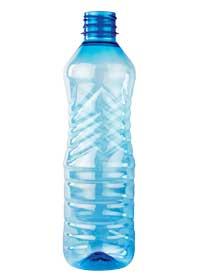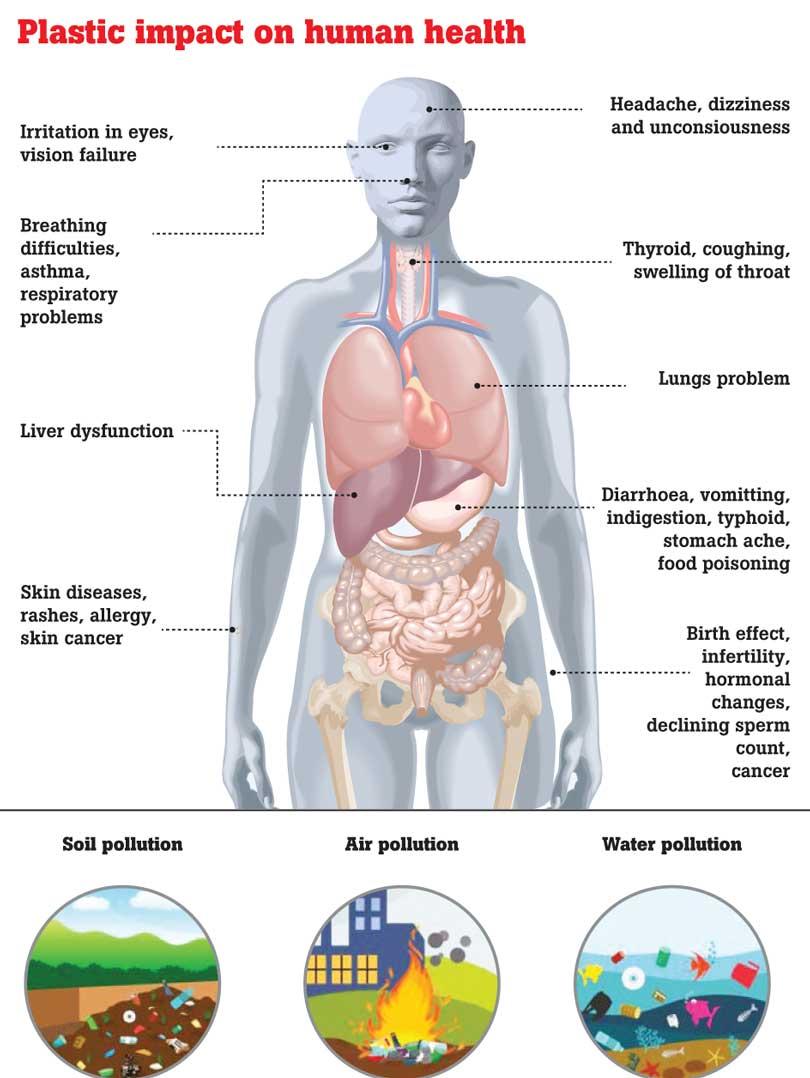17 Jan 2020 - {{hitsCtrl.values.hits}}
 Nowadays people don’t give much attention to food, sleeping and other habits that need to be prioritised. Therefore they look for easy ways to prepare meals. With globalization, people have been discovering new materials to prepare cooking utensils while new methods of cooking have replaced traditional methods. Utensils made out of traditional materials are time consuming to use while those made out of inexpensive, durable and user-friendly materials are easier to use. However, these materials could have adverse impacts on our health in the long-run. A popular substitute is plastics which provides a better solution in meeting these requirements in daily cooking and storage activities. This is because it is inexpensive, light in weight, strong, durable and corrosion resistant and includes high thermal and electrical insulation properties. These properties have made plastic the most used material for food and liquid packaging in recent times.
Nowadays people don’t give much attention to food, sleeping and other habits that need to be prioritised. Therefore they look for easy ways to prepare meals. With globalization, people have been discovering new materials to prepare cooking utensils while new methods of cooking have replaced traditional methods. Utensils made out of traditional materials are time consuming to use while those made out of inexpensive, durable and user-friendly materials are easier to use. However, these materials could have adverse impacts on our health in the long-run. A popular substitute is plastics which provides a better solution in meeting these requirements in daily cooking and storage activities. This is because it is inexpensive, light in weight, strong, durable and corrosion resistant and includes high thermal and electrical insulation properties. These properties have made plastic the most used material for food and liquid packaging in recent times.
Plastic
 Plastic is the most useful synthetic substance, made up of elements extracted from fossil fuel resources. During the past 03 decades plastic materials have been used widely in food, clothing, shelter, transportation, construction, medical and leisure industries. The most common plastics are thermoplastic materials that are produced primarily by the catalytic polymerization ofethylene gas (C2H4) at elevated temperatures and pressures.
Plastic is the most useful synthetic substance, made up of elements extracted from fossil fuel resources. During the past 03 decades plastic materials have been used widely in food, clothing, shelter, transportation, construction, medical and leisure industries. The most common plastics are thermoplastic materials that are produced primarily by the catalytic polymerization ofethylene gas (C2H4) at elevated temperatures and pressures.
Plastic used in food preparation
Recent Plastic food and beverage containers have became fairly popular and have become ubiquitous in our lives. Plastics play a part in every phase of preparing food. Food gets processed on plastic equipment and packaged and shipped in plastic-lined boxes and cans. At home, we store and reheat the leftovers in plastic containers.
Types of plastic use in food packaging
More than 30 types of plastics have been used as packaging materials including polyethylene, polypropylene, polycarbonates and polyvinyl chlorides. Polyethylene and polypropylene are the most common.
Polyethylene
Has high or low density forms. High-density polyethylene is stiff and strong and used to bottle milk, water and juice and to box cereal (in boxliners), margarine, grocery, rubbish and retail bags but they are not heat stable. Low-density polyethylene is relatively transparent and used to produced bread bags, freezer bags, flexible lids and squeezable food bottles. Most commercial polyethylene formulations contain additives, such as stabilizers, antioxidants, cross-linking agents, slip and anti-block agents and fire retardants.
Polyethylene terephthalate
Is a polyester and is commonly used to produce soft drink bottles, jars and tubs, thermoformed trays and bags and snack wrappers because it is strong, heat resistant and resistant to gases and acidic foods. It can be transparent.
Polypropylene
Is more heat resistant, harder, denser and more transparent than polyethylene. Hence it is used for heat-resistant microwavable packaging and sauce or salad dressing bottles.
Polycarbonate
Is clear, heat resistant and durable and often used as a substitute for glass in items such as refillable water bottles and sterilisable bottles used as baby products. It is also sometimes used in epoxy-based lacquers on the inside of food and drink cans to prevent the contents reacting with the metal of the can.
How plastic becomes toxic
Actually, plastic polymers are not toxic. However, in the plastic material production many of non-polymeric components such as residual monomers, oligomers, lowmolecular weight fragments, catalyst remnants, polymerization solvents and a wide range of additives are added. Since the non-polymeric compounds usually are of low molecular weight and are either weakly bound or not bound at all to the polymeric macro-molecules, they, or their degradation products, can be released from the plastic product water or other contact media such as food. If the product is exposed to common-use stresses such as ultraviolet (UV) radiation in sunlight, microwave radiation,moist heat via boiling or dish washing.
Health hazards by particular toxic materials in plastic product
Bisphenol A: Bisphenol A is a toxic chemical which leaches from the lining of food and beverage cans where it is used as an ingredient in the plastic used to protect the food from direct contact with the can. It is especially likely to leach from plastics when they are cleaned with harsh detergents or contact with acidic or high-temperature liquids. BPA is used to form epoxy resin coating of water pipes also in older buildings, such resin coatings are used to avoid replacement of deteriorating pipes. Heavy exposure of BPA makes vast range of health consequences in human as followed;
Obesity: Bisphenol A may increase the risk for obesity since neural routes that regulate feeding behaviour can distress by endocrine disruptors such as like bisphenol A and as a result of that obesity risk is increased.
Neurological Effects: BPA alters long-term effect on the hippocampus and this will induce significant effects on memory processes.
Disruption of the Dopaminergic System: Few research studies have discovered that potential of BPA to mimicsestrogenic activity and affects various dopaminergic processes to enhance mesolimbic dopamine activity resulting in hyperactivity, attention deficits,and a heightened sensitivity to drugs of abuse. Early onset of puberty is occurred.
Thyroid Function: BPA is a thyroid disrupting chemical that may especially affect pregnant women, neonates and small children.
Cancer Effect: Bisphenol A may increase breast cancer risk and BPA also promotes the quick spread and development of secondary malignant growth at a distance from primary site of nerve cancer.
Brain Tumors: A human study done in China discovered that BPA increases noncancerous brain tumors. Those with higher urine BPA levels were about 1.6 times more likely to have meningioma compared to those with lower concentrations Reproductive System and Sexual Behavior: Exposure to BPA is associated with adult male sexual dysfunction.
Diabetes and Cardiovascular disease: As shown in studies, low-level exposure to BPA inhibits the release of adiponectin from human adipose (fat) tissue. Adiponectin increases insulin sensitivity and helps regulate glucose metabolism. Another study indicates that urinary BPA levels in humans were associated with increased prevalence of diabetes and cardiovascular disease.
Formaldehyde: Is a preservative which is used in many disposable coffee cups and foam take-out containers, known and suspected as a carcinogen. According to a report by the National Institute of Health formaldehyde has been linked to both leukemia and a rare type of nasal cancer.
Styrene: It can leach from polystyrene plastic and it is commonly found in disposable cups and bowls, Styrofoam food trays, egg containers, opaque cutlery and carryout containers. According to International Agency for Research on Cancer, styrene is a possible human carcinogen. Studies have found that styrene increases the risk of cancer of the pancreas and of esophagus. Themigration of styrene from food containers and packaging to human body through food. Research findings indicated that a single use of polystyrene cup approximately 0.025 % styrene can be transferred to the human body with a hot or cold beverage. It has been observed that styrene migration is accelerated by fat contents in the food, heat, acidity and the presence of ethanol and Vitamin A.
Long-term exposure to small quantity of styrene can cause a low platelets count or hemoglobin values, chromosomal and lymphatic abnormalities, neurotoxic effect due to the accumulation of styrene in the brain tissues, spinal cord and peripheral nerves which causes fatigue, behavioral changes like nervousness, anxiety and other chronic disorders related to nervous system. Chronic exposure to a high level of styrene can damage the liver and nerve tissues. Extra caution should be taken with regard to pregnant women as it affects adversely on a developing body. As alcohol can pass through placental barrier, this could be the vehicle for the transmission of styrene monomer into the fetus. A study found that styrene can be transmitted through breast milk to the newborn.
Pthalates : Are a group of chemicals found in Polyvinyl Chloride (PVC) and it is the reason for endocrine –disrupting, early puberty in girls, a risk factor for breast cancer in later life and act as week estrogens.
Dioxin: It is formed in the manufacturing of PVC and has been classified as known human carcinogen and acts as endocrine disruptor.
Recommendations
Plastic is a silent killer since it contains different kinds of non-polymeric toxic compounds which are added during plastic production. Therefore, we have to minimise the usage of plastics and have to substitute it by using equipment made of natural materials which will not have an impact on our lives. By choosing safer plastics and limiting plastic waste, we can support a healthier, cleaner environment and protect ourselves and our families from unnecessary exposure to chemicals.
The writer is a medical laboratory technologist at a private hospital and holds a MSc. Degree in Industrial and Environmental Chemistry from the University of Kelaniya and a BSc in Food Prod uction and Technology and a Management degree from the Wayamba University of Sri Lanka.


04 Jan 2025 4 hours ago
04 Jan 2025 4 hours ago
04 Jan 2025 5 hours ago
04 Jan 2025 7 hours ago
04 Jan 2025 7 hours ago